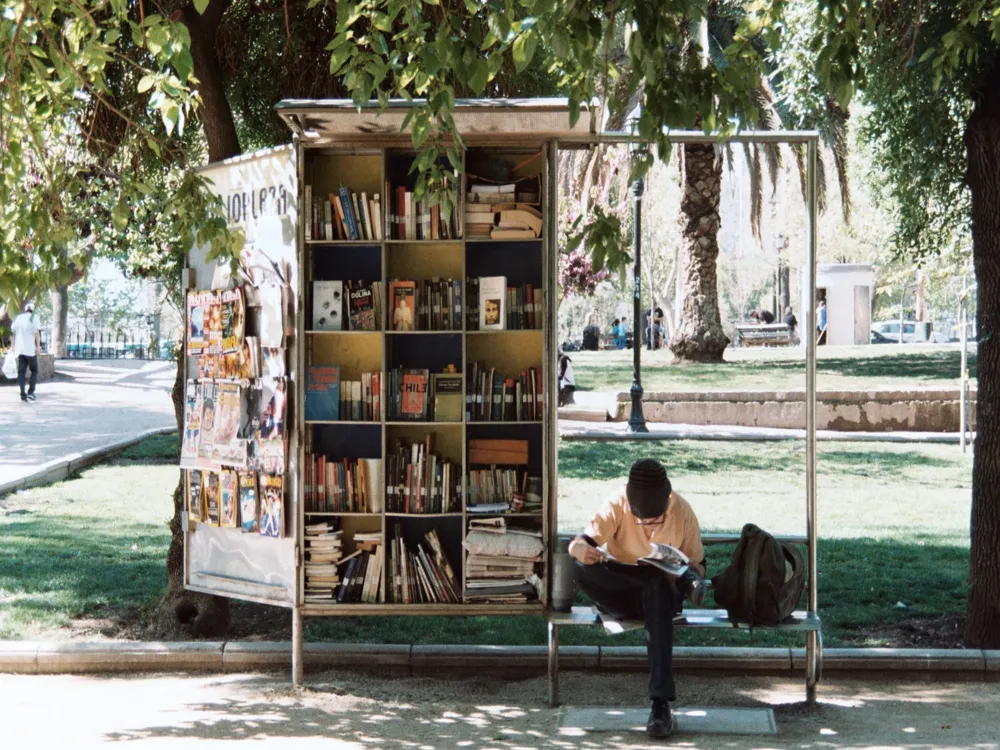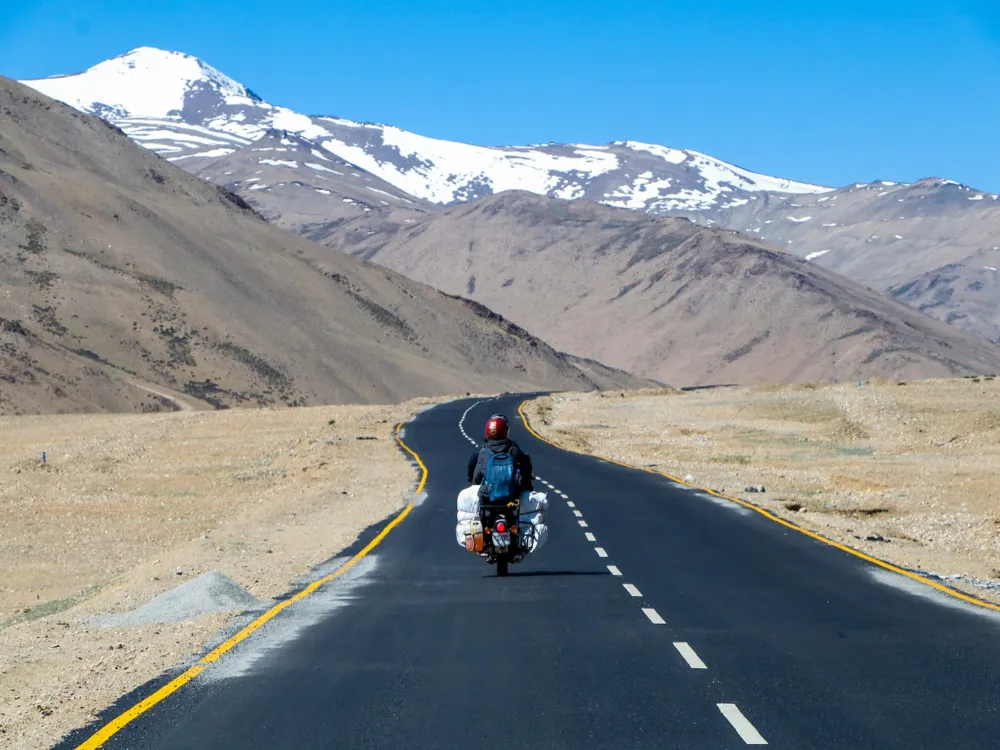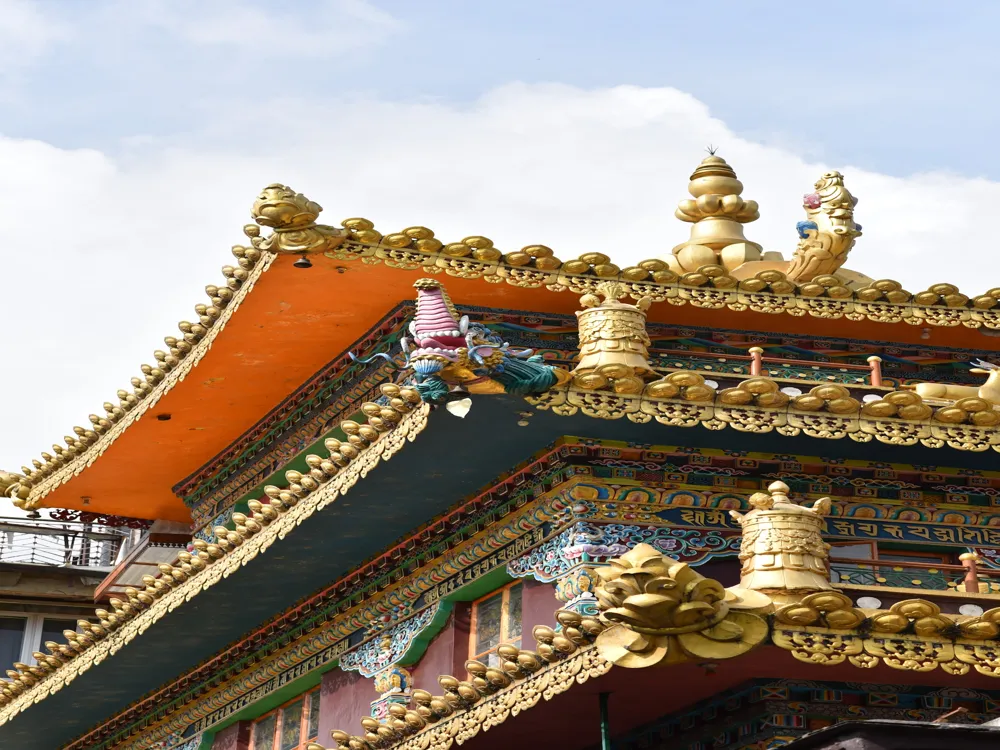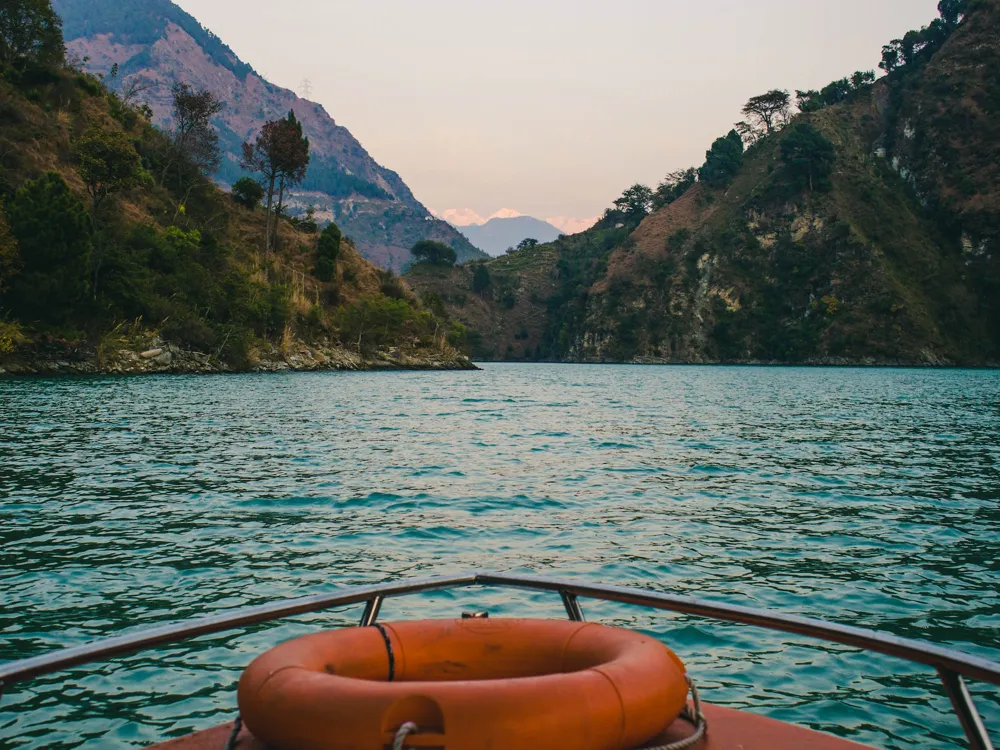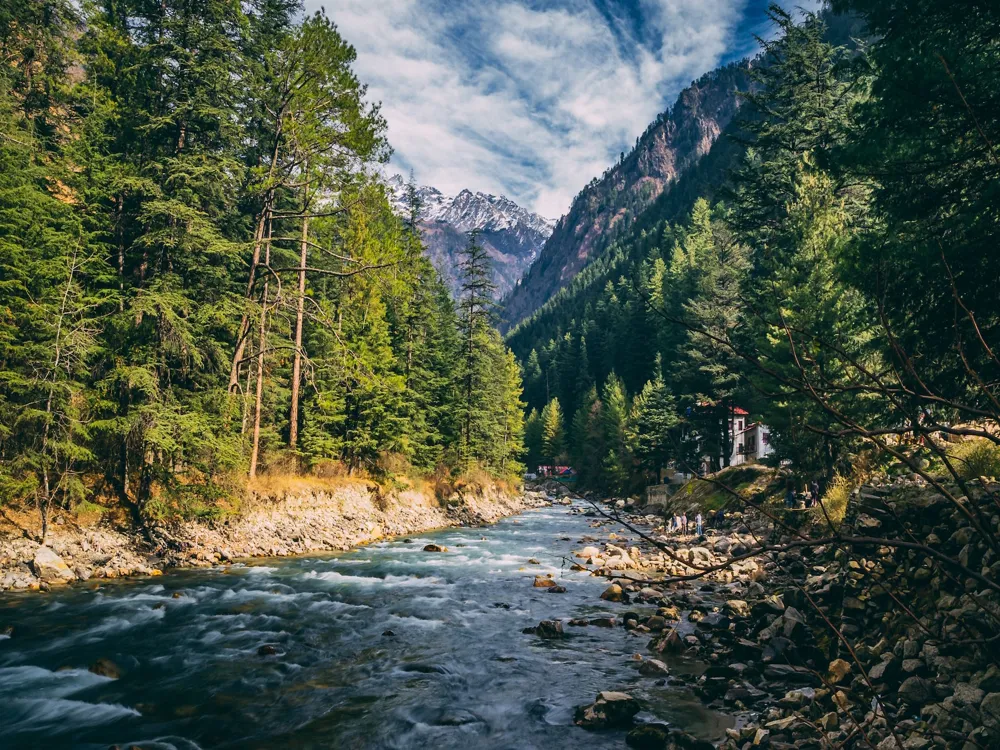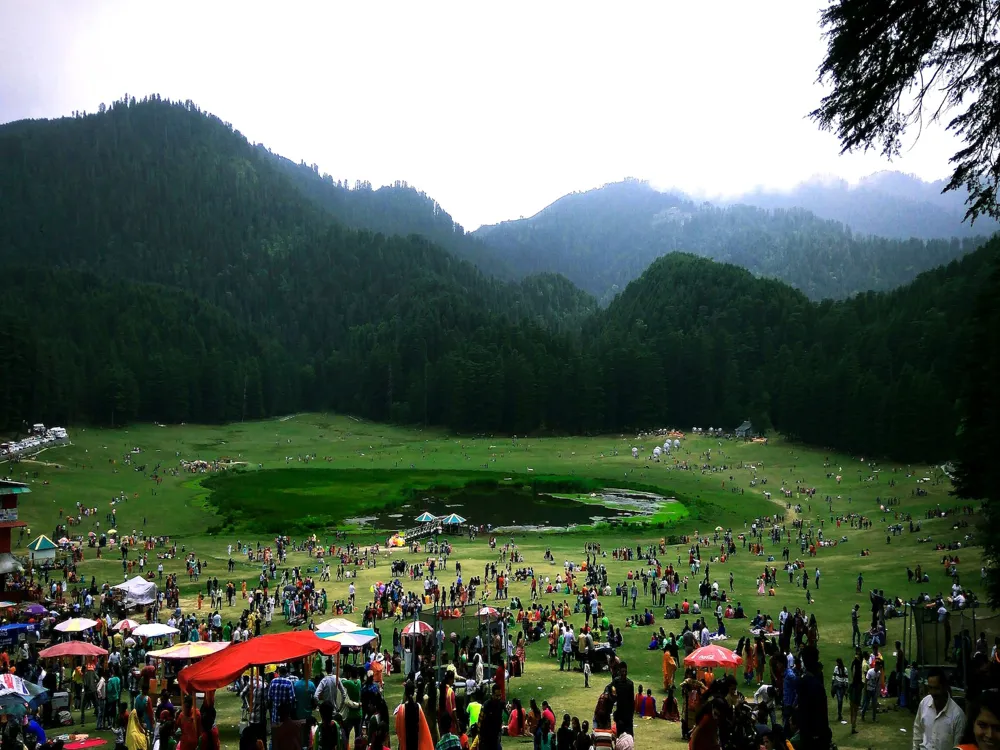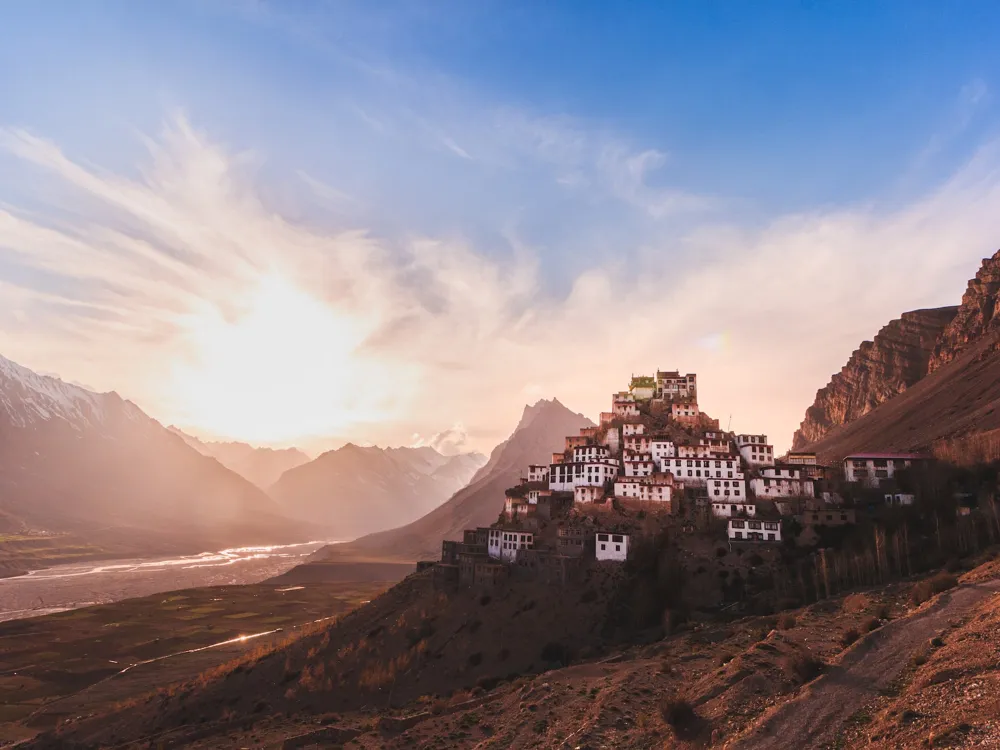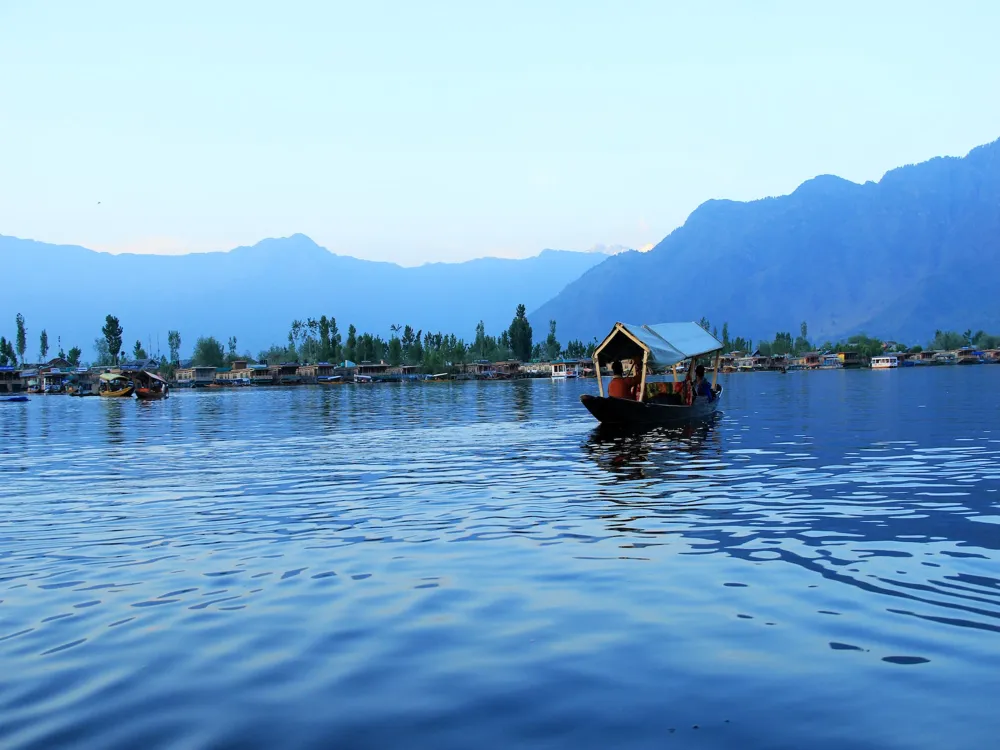Stakna Gompa, a Buddhist monastery of immense historical and cultural significance, sits majestically in the Hemis region of Ladakh, India. Founded in the late 16th century by the Bhutanese scholar and saint, Chosje Modzin, the monastery's name, 'Stakna', aptly means 'tiger's nose', derived from its unique location on a hill shaped like a tiger's nose. This monastery is a part of the Drugpa sect in Tibetan Buddhism and stands as a symbol of peace and spirituality, attracting visitors and devotees from across the globe. The monastery is renowned for its exquisite architecture, a seamless blend of Bhutanese and Tibetan styles, and its picturesque setting overlooking the Indus River. Stakna Gompa is not just a religious site but also a treasure trove of Buddhist culture and heritage. It houses an impressive collection of artifacts, including statues, thangkas, and religious texts, which provide a deep insight into the Buddhist way of life and its teachings. Visitors to Stakna Gompa are greeted by the serenity and tranquility that the monastery exudes, offering a spiritual retreat from the hustle and bustle of modern life. The annual festivals held here, such as the Hemis Festival, showcase the rich traditions and vibrant culture of the region, making it a must-visit destination for anyone interested in exploring the depth of Buddhist heritage and the unspoiled beauty of Ladakh. The architecture of Stakna Gompa is a masterpiece that beautifully encapsulates the essence of Himalayan Buddhist art and architecture. The main assembly hall, known as Dukhang, is the heart of the monastery, adorned with intricate murals and thangkas that illustrate various aspects of Buddhist lore. The vivid colors and detailed depictions in these artworks are a testament to the skilled craftsmanship of the artists who created them. One of the most striking features of Stakna Gompa is its central image of Avalokiteshvara, the bodhisattva of compassion. This statue is not only a symbol of spiritual significance but also an artistic marvel, reflecting the deep-rooted religious beliefs and artistic heritage of the region. The gompa also contains several shrines dedicated to different deities and lamas, each with its unique design and significance. The monastery's structure is a harmonious blend of the local architectural style with Tibetan influences. The use of locally sourced materials, such as wood and stone, in its construction, and the unique way in which the monastery is built into the hillside, exemplify the ingenuity and adaptability of Himalayan architecture. The layout of Stakna Gompa, with its series of courtyards, temples, and residential quarters, creates a sense of community and spiritual kinship among the monks who reside there. The intricate woodwork and carvings seen throughout the monastery are another highlight of its architectural beauty. These elements not only add to the aesthetic appeal but also have symbolic meanings, representing various aspects of Buddhist philosophy and teachings. The monastery's location also plays a crucial role in its design, with the building oriented to take advantage of the stunning views of the surrounding landscape and to symbolize the monastery's connection with nature and the cosmos. Visitors should always be mindful of the local customs and religious practices. Dress modestly, remove shoes before entering sacred areas, and avoid loud conversations or inappropriate behavior within the monastery premises. While photography is allowed in most areas of the monastery, always ask for permission before taking pictures, especially inside the prayer halls or of the monks. Some areas may have restrictions on photography. The best time to visit Stakna Gompa is during the summer months, from May to September, when the weather is pleasant. It's also a great time to witness local festivals, such as the Hemis Festival. Opt for a guided tour if possible, as it can provide deeper insights into the history, architecture, and religious significance of Stakna Gompa. Since Stakna Gompa is located at a high altitude, it's advisable to acclimatize properly to avoid altitude sickness. Stay hydrated and take it easy for the first few days. Stakna Gompa is accessible via road from Leh, the capital of Ladakh. The monastery is approximately 25 kilometers from Leh, and the journey takes about an hour by car. Visitors can hire taxis or take local buses from Leh to reach Stakna. For those seeking a more adventurous route, trekking or biking to the monastery offers a unique way to experience the stunning landscapes of Ladakh. It's important to note that the roads to Stakna Gompa can be challenging, especially during the winter months when snow and ice can make travel difficult. Therefore, planning the visit according to weather conditions and road accessibility is crucial. Read MoreOverview of Stakna Gompa of Hemis
Architecture of Stakna Gompa
Tips When Visiting Stakna Gompa
Respect Local Customs and Traditions
Photography Guidelines
Best Time to Visit
Guided Tours
Altitude Sickness Precautions
How To Reach Stakna Gompa
Stakna Gompa
Hemis
NaN onwards
View hemis Packages
Hemis Travel Packages
View All Packages For Hemis
Top Hotel Collections for Hemis

Private Pool

Luxury Hotels

5-Star Hotels

Pet Friendly
Top Hotels Near Hemis
Other Top Ranking Places In Hemis
View All Places To Visit In hemis
View hemis Packages
Hemis Travel Packages
View All Packages For Hemis
Top Hotel Collections for Hemis

Private Pool

Luxury Hotels

5-Star Hotels

Pet Friendly










